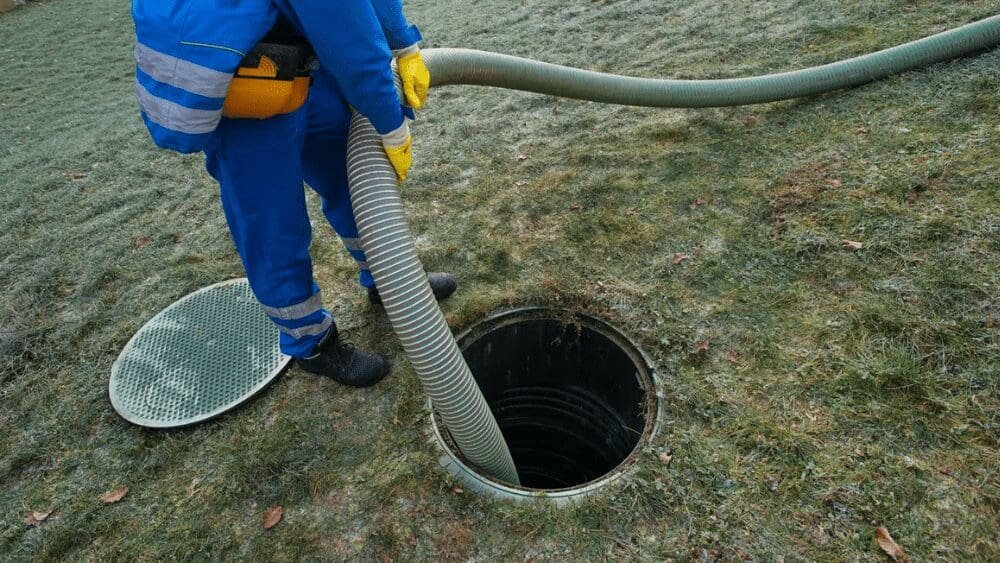[ad_1]
Septic tank inspections examine these features
Ingrid Williams is a top agent in Iowa who works with 73% more single-family homes than the average West Des Moines agent. She explains that Iowa requires point of sale septic inspections at the time of transfer of property. “The purpose is to eliminate pollution of the septic system,” she notes.
Inspectors will check three elements of a septic system: septic tank, the distribution box, and the leach field. If all three components function properly and are structurally sound, the system will pass inspection.
The inspector’s first step is locating the septic system. You may have an “as-built” drawing or sketch left over from the permitting process, but some of the older sketches from years ago are pretty … sketchy, with vague distances and few or long-gone landmarks.
If that’s the case, a certified inspector — a private contractor, someone from the Health Department, or a wastewater professional — can locate the underground tank by flushing a small radio transmitter down the toilet. (The transmitter will be removed after locating the tank.)
After determining the site of your system, the inspector can proceed to investigate. The next actions the inspector would perform include:
- Conduct a visual inspection of the drain field, looking for cesspools, sogginess, or green or black standing water (indicating mold).
- Flush the toilet and run water to ensure proper water pressure and even distribution in the septic drain field.
- Look for potential leaks. According to Steve Phelps, manager of Affordable Septic and Repair in Bloomington, Indiana, it’s necessary to pump the tank in order to get a good look at it. “You have to pump it down to look inside.” Once it’s pumped, he uses a flashlight to look for cracked, chipping, rotting, or weathered spots.
- Remove the cover to check the water level. If the liquid in the tank is higher than the outlet pipe, or if it has reached the top of the tank, it is “overfull” and indicates a potential problem with the drain field.
- Measure the level of solids in the tank, including scum and sludge layers, with the use of sludge judge: a long, hollow pole. “If you see 6-10 inches of thick sludge, you know it wasn’t pumped right,” Phelps says. He observes that some companies pump from the bottom of the tank, which leaves the sludge layer behind. The thick solids then rise to the top when the tank fills again.
- Check the baffles to ensure they’re not covered by solids and are several inches higher than the sewage level, with no evidence of previous overflows.
- Check the distribution box, or D-box (a component between the septic tank and the drain field that ensures even distribution of wastewater to all the drain field lines) for damaged outlets or openings that restrict flow, structural integrity, and tilting or tipping that causes uneven distribution. Phelps also looks for wetness and sinkholes around the D-box, both indications of problems.
Common septic inspection findings and repair costs
The typical professional septic system inspection generally costs between $100-$250 and takes two to three hours to complete. If the inspector has to uncover the tank, it can add another $50 to $250 to the bill, depending on the depth of the unit. Keep in mind that some repairs may be more expensive during the winter in colder climates because access is more difficult.
Phelps likes to point out that the cost is comparable to the price paid by city dwellers for water and sewer, although while their costs are spread out over the course of a year, the bill for septic inspections and cleanings come all at once.
Some of the common issues discovered during inspection include:
Cracked tank
Septic tanks are typically constructed of concrete, steel, fiberglass, or polyethylene. Steel tanks can rust. Fiberglass and polyethylene tanks can be crushed by traffic or split. Concrete tanks are usually more durable but can crack. The average cost to repair a damaged tank is $2,000. Replacement runs significantly higher: over $5,000, depending on the size and material.
Damaged wall
Septic tank walls can be damaged by shifting ground (such as an earthquake), exposure to the elements, or invasive tree roots. Cracks or holes in the wall often result in leaks. Depending on the extent of the damage, repairs can cost anywhere from $500 to $4,000.
Faulty D-box
The Distribution Box controls distribution of wastewater into the leach field. If it is damaged, problems result down the line. Replacement generally runs between $500 and $1,500.
A concrete D-box should last 20 years, but tree roots, damage from heavy machinery, or sludge build-up can shorten its life. Signs of a failed box may look like septic tank blockage or drain field issue.
Pump failure
The septic tank pump helps the effluent flow to the drain field. These wear out and need to be replaced every few years, at a cost of $500 to $1,500.
Invasive roots
Trees or shrubs planted too closely can actually grow into a septic tank or the pipes. To remove the roots costs between $600 and $1,600. Costs can escalate if the roots have damaged the tank, which needs repair.
Phelps says tree roots can sometimes be cut, but if they’re established or large, it’s more likely that the pipes will have to be dug up and replaced. “They’re probably already broken by the roots.”
System is too small for the home
If the septic system is too small for the home, it will quickly become overloaded, as signified by water on the ground surface. Septic system size is based on the number of bedrooms a home has: a four-bedroom home requires a 1,200-gallon tank, for example. Installing a 1,200-gallon tank can cost between $7,000 and $12,000.
Baffles clogged or not connected to the tank’s inlet and outlet pipes
Baffles prevent scum and grime from building up in the pipes and causing clogs. Over time, they can become cracked or damaged, or wear. Cost to repair an outlet baffle ranges from $250 to $900.
Low bacteria level
Aerobic Treatment Units use oxygen and bacteria to break down waste. If the level of bacteria is low (usually a result of the tank not being used for some time), the system loses efficiency. The cost to add bacteria ranges from $400 to $600.
Swampy Drain/Leach Field
The drain or leach field is a section of your septic system that returns waste water to the soil. If the lawn becomes swampy or produces a foul stench, it’s a sign the field is not functioning properly. “Standing water by the laterals is a big issue,” Williams observes.
Repair or rejuvenation typically runs from $1,000 to $5,000 and involves pumping the leach field to remove excess water and clogs before adding bacteria and enzymes to renew the field. If the situation is dire, the field may need to be completely replaced. The average cost to replace a drain field can cost $3,000 to $15,000, depending on the size.
If the weather is wet during an inspection, Phelps checks to see how much water flows into the tank from the D-box and finger system. “If it’s draining back in too long, that’s a concern that the finger system is failing.”
Tank overflows
The sludge on the bottom of the tank should not be more than 1/3 of the tank’s total volume or rise to the level of the baffles. If the septic tank is full and needs to be pumped, that can cost $300 to $700. If the issue is something more serious, such as invasive tree roots, expect the cost to climb.
Septic tank doesn’t drain
If the tank is full of water but won’t drain, it’s most likely due to a blockage. The tank or the pipes may have become clogged with sludge or invaded by tree roots. Phelps sometimes uses high-pressure water to clear clogs. The typical fix costs $250 to $10,000, depending on the severity of the issue. For example, a baffle can be a simple $250 fix, while replacing a lateral line is likely to run $2,000. If you have to replace an entire leach field, brace yourself for a potential $20,000 tab.
Sinking ground around the tank
Sinking ground or a sinkhole around the septic tank is often caused by a leak in the septic tank or the lines to the leach field. Fixing the issue can cost from $1,000 to $10,000, depending on the specific cause, such as corroded pipes, a cracked tank, or a blockage or other damage with the leach field.
Leach field leakage
A leach field that is leaking at one end could indicate damage to the tank or the connection or some sort of blockage. Rejuvenation — pumping excess water from the field before adding beneficial bacteria and enzymes to refresh the system — is generally between $1,000 and $5,000, but repairing a leak in the leach field typically costs between $1,500 to $20,000.
[ad_2]
Source link





















